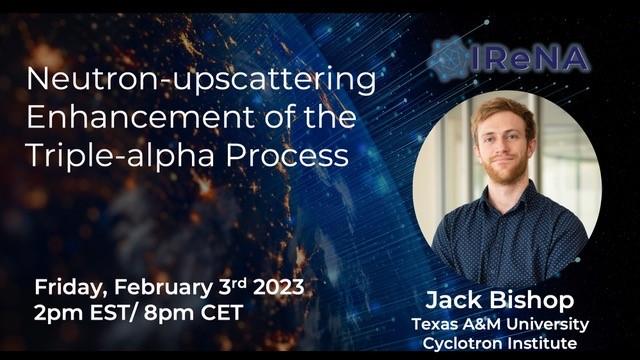Data
You will be redirected to cenamweb.org in 15 second(s). The JINA-CEE website is not updated anymore. The archived website can still be reached through the CeNAM website.
Neutron-upscattering enhancement of the triple-alpha process featuring Jack Bishop (Texas A&M University)

Carbon is produced in stars mainly via the triple-alpha process where three helium nuclei fuse to form an excited state of carbon-12 known as the Hoyle state. This is a nuclear resonance (an excited form of a nucleus) that has properties that guide the rate that the triple alpha process takes place. Primarily, the key property is how often the Hoyle state is able to lose energy and end up in the ground state of carbon-12 – known as the radiative width. It has long been discussed that in the presence of a very high density of neutrons (~106 g/cm3), the rate of carbon formation may dramatically increase due to the phenomenon of neutron upscattering. This is where a low-energy neutron interacts with the resonance and takes energy away as kinetic energy, leaving the carbon-12 in the ground state and therefore increasing the effective radiative width. Such a scenario has up until now been impossible to measure experimentally.
Using a new experimental technique of firing a beam of neutrons into a detector known as a Time Projection Chamber (TPC), namely the TexAT TPC, the time-reverse of the astrophysical case was studied for the first time. Using the quantum mechanics idea of detailed balance, we can use the time-reverse reaction rate to study the astrophysical case.
In this talk I will guide the audience through the physics behind this case, demonstrate how a TPC works, and show the results from the experiment that answers the question of the importance of neutron-upscattering in the triple-alpha process.
